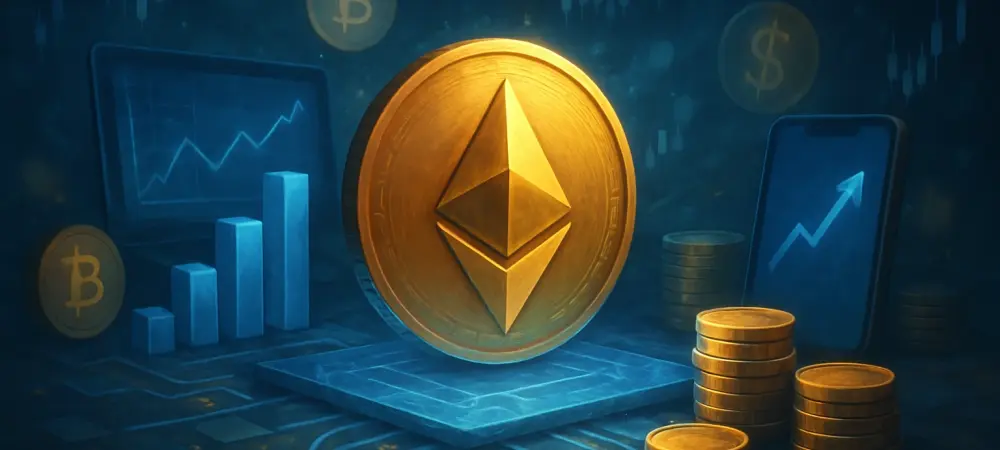In a financial landscape increasingly shaped by digital transformation, decentralized finance (DeFi) has emerged as a powerhouse, with total value locked (TVL) in DeFi protocols surpassing $100 billion as reported by DeFi Pulse. This staggering figure underscores a seismic shift in how capital flows within the cryptocurrency ecosystem, challenging traditional banking models with unprecedented speed. The allure of DeFi lies in its promise to democratize access to financial tools, offering solutions that bypass intermediaries and empower users globally. This analysis delves into key trends driving DeFi’s ascent, spotlighting innovative projects like Mutuum Finance (MUTM), dissecting investor sentiment, exploring future possibilities, and reflecting on the broader implications of this transformative movement.
The Rise of DeFi and Its Market Impact
Growth Metrics and Adoption Trends
DeFi’s meteoric rise is evident in the data, with TVL in protocols growing at a compounded pace over recent years, reflecting a robust appetite for decentralized solutions. According to Chainalysis, user adoption has also surged, with millions of wallets interacting with DeFi platforms, a clear indicator of mainstream traction. This growth signals a fundamental shift in how individuals and institutions perceive value in blockchain-based finance, prioritizing accessibility and efficiency over conventional systems.
Beyond raw numbers, investor focus has pivoted toward DeFi projects that deliver tangible utility rather than mere speculation. Capital inflows into DeFi have outpaced many traditional crypto assets, with market share expanding as investors seek platforms offering real-world applications like lending and yield farming. Such trends highlight a maturing market where functionality trumps hype, setting the stage for sustained expansion in this sector.
Case Study: Mutuum Finance as a DeFi Innovator
Among the myriad DeFi projects, Mutuum Finance stands out with its distinctive peer-to-contract (P2C) and peer-to-peer (P2P) lending models, catering to diverse investor needs. The P2C system allows users to deposit stablecoins like USDT for predictable returns, such as a 15% annual percentage yield (APY), ensuring steady passive income with minimal risk. Meanwhile, the P2P model supports lending of volatile tokens, balancing higher rewards with isolated risk pools to safeguard the platform.
The presale phase of MUTM has further cemented its position as a notable player, drawing over 16,550 holders and aiming to raise $16.2 million by allocating a significant portion of its token supply. This momentum reflects growing confidence in structured DeFi offerings, positioning MUTM as a benchmark for innovation. Its ability to attract such a substantial following early on underscores the market’s hunger for reliable financial tools within the crypto space.
Investor Sentiment and Whale Activity in DeFi
Shifting attention to market dynamics, large investors, often dubbed “whales,” have shown keen interest in DeFi projects like MUTM, viewing them as undervalued opportunities with long-term potential. Market analysts note that these influential players strategically accumulate tokens during presale stages, banking on the promise of structured solutions to deliver consistent value. This behavior points to a deeper trust in platforms that prioritize stability over fleeting trends.
Expert opinions reinforce this sentiment, with industry leaders highlighting DeFi’s capacity to redefine financial access on a global scale. Despite challenges like market volatility and looming regulatory uncertainties, there remains a strong consensus on the sector’s resilience. Analysts argue that projects with robust governance and practical applications are well-placed to weather economic storms, attracting sustained capital from discerning investors.
Balancing this optimism, the hurdles of navigating an evolving regulatory landscape cannot be ignored, as governments grapple with how to oversee decentralized systems. Yet, the prevailing view among experts is that DeFi’s potential to empower underserved populations far outweighs temporary setbacks. This duality of opportunity and risk continues to shape investor strategies, particularly among those with significant stakes in the market.
Future Prospects of DeFi Innovations
Looking ahead, the trajectory of DeFi appears poised for further breakthroughs, with advancements like Layer-2 integration promising enhanced scalability and reduced transaction costs. Projects like MUTM, which have outlined such integrations in their roadmaps, stand to benefit from faster, cheaper operations, potentially driving wider adoption. Listings on major exchanges such as Binance or Coinbase could further amplify visibility, bridging the gap between niche and mainstream markets.
The broader benefits of DeFi, including financial inclusion for unbanked populations and diverse passive income streams, remain compelling drivers of growth. However, competitive pressures within the crowded DeFi arena pose risks, as does the challenge of flawless execution amidst rapid innovation. Projects that can navigate these obstacles while maintaining user trust are likely to emerge as leaders in shaping market trends.
Analyzing possible scenarios, DeFi platforms emphasizing utility and security could dominate during market downturns, offering a safe harbor for capital. Conversely, the specter of speculative bubbles looms large, with overhyped projects risking sharp corrections if they fail to deliver on promises. The balance between innovation and reliability will likely determine which initiatives thrive in an increasingly discerning investment landscape.
Conclusion: The DeFi Revolution and Beyond
Reflecting on the journey, DeFi’s remarkable growth stands as a testament to its disruptive power, with standout projects like MUTM redefining lending through inventive P2C and P2P models. Investor priorities have shifted markedly toward stability and utility, evidenced by significant whale activity and presale successes that underscore confidence in structured solutions. This evolution marks a pivotal chapter in cryptocurrency’s history, highlighting DeFi’s role as a cornerstone of financial innovation.
Moving forward, stakeholders are encouraged to actively explore emerging DeFi platforms, focusing on those with clear roadmaps and robust security measures to mitigate inherent risks. Staying vigilant about regulatory developments and market shifts becomes crucial, as does fostering community engagement to support sustainable growth. These steps promise to unlock DeFi’s full potential, paving the way for a more inclusive and resilient financial future.

